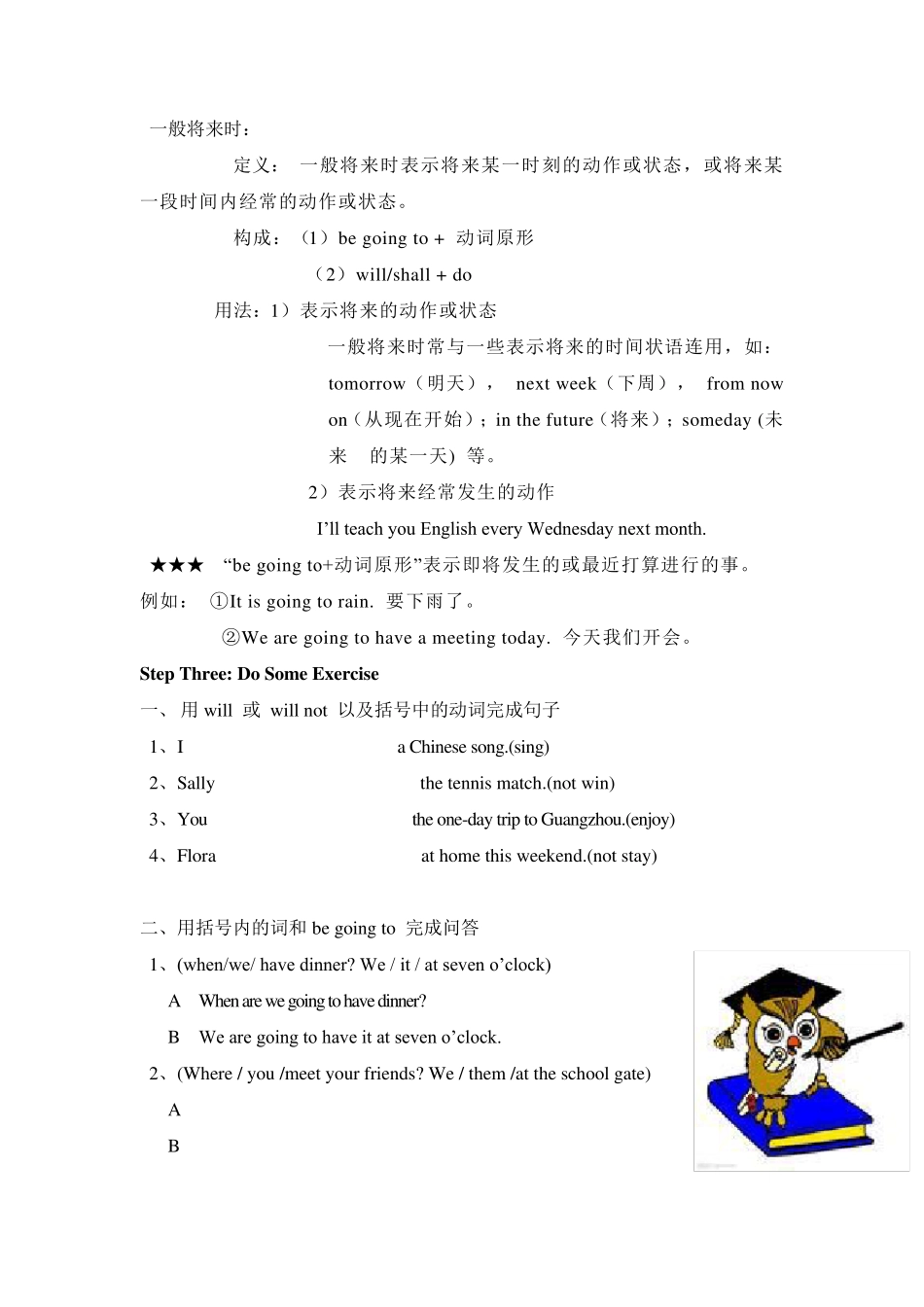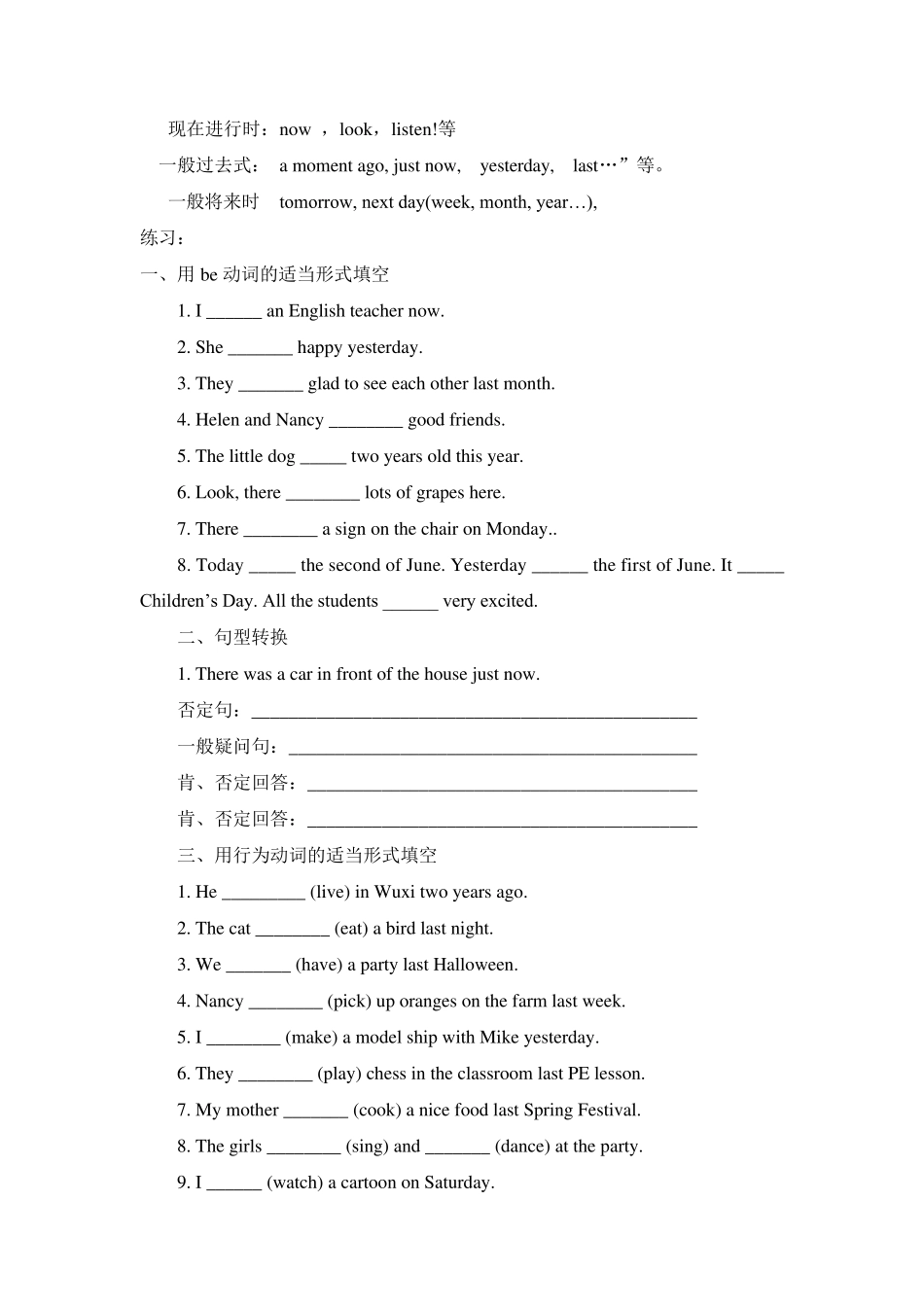一般将来时: 定义: 一般将来时表示将来某一时刻的动作或状态,或将来某一段时间内经常的动作或状态。 构成:(1)be going to + 动词原形 (2)will/shall + do 用法:1)表示将来的动作或状态 一般将来时常与一些表示将来的时间状语连用,如:tomorrow(明天), next week(下周), from now on(从现在开始);in the future(将来);someday (未来 的某一天) 等。 2)表示将来经常发生的动作 I’ll teach you English every Wednesday next month. ★★★ “be going to+动词原形”表示即将发生的或最近打算进行的事。 例如: ①It is going to rain. 要下雨了。 ②We are going to have a meeting today. 今天我们开会。 Step Three: Do Some Ex ercise 一、 用will 或 will not 以及括号中的动词完成句子 1、I a Chinese song.(sing) 2、Sally the tennis match.(not win) 3、You the one-day trip to Guangzhou.(enjoy) 4、Flora at home this weekend.(not stay) 二、用括号内的词和 be going to 完成问答 1、(when/we/ have dinner? We / it / at seven o’clock) A When are we going to have dinner? B We are going to have it at seven o’clock. 2、(Where / you /meet your friends? We / them /at the school gate) A B 3、(you and Ling / play football/ today? No / we/ table tennis) A B 现在进行时 be+动词ing。 一般过去时 动词+ed 一般将来时 be going to+实义动词原形; 一般现在时 用动词原形,主语是第三人称单数时,动词要加s/es。 动词变化 一般现在时 主语是第三人称单数时,动词要加s/es。 动词+s的变化规则 1.一般情况下,直接加-s,如:cook-cooks, milk-milks 2.以s. x. sh. ch. o 结尾,加-es,如:wash-washes, watch-watches, go-goes 3.以“辅音字母+y”结尾,变y 为i, 再加-es,如:study-studies; 现在进行时 动词加in g 的变化规则 1)一般情况下,直接加ing,如:cook-cooking 2)以不发音的e 结尾,去e 加ing,如:make-making, taste-tasting 3)如果末尾是一个元音字母和一个辅音字母,双写末尾的辅音字母,再加ing,如:run-running, stop-stopping, swim-swimming 动词过去式变化规则: 1...


